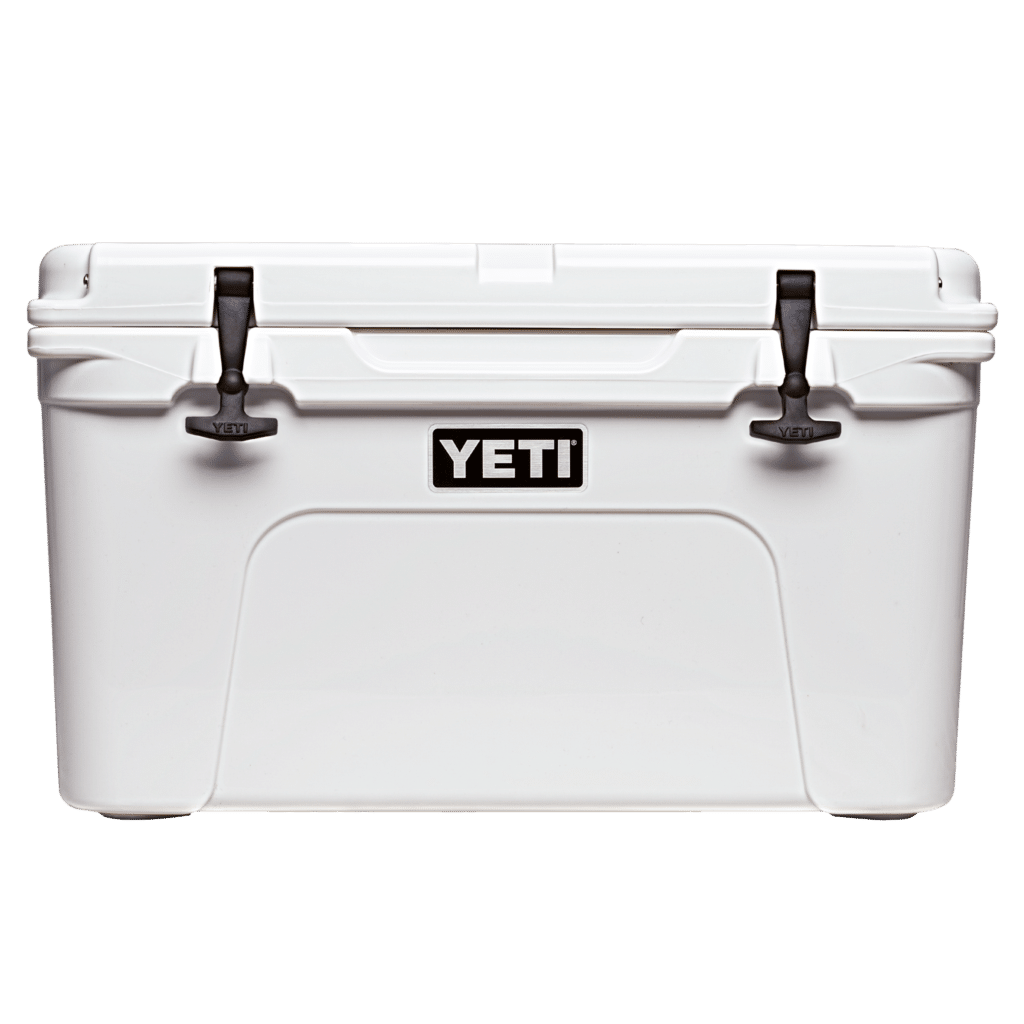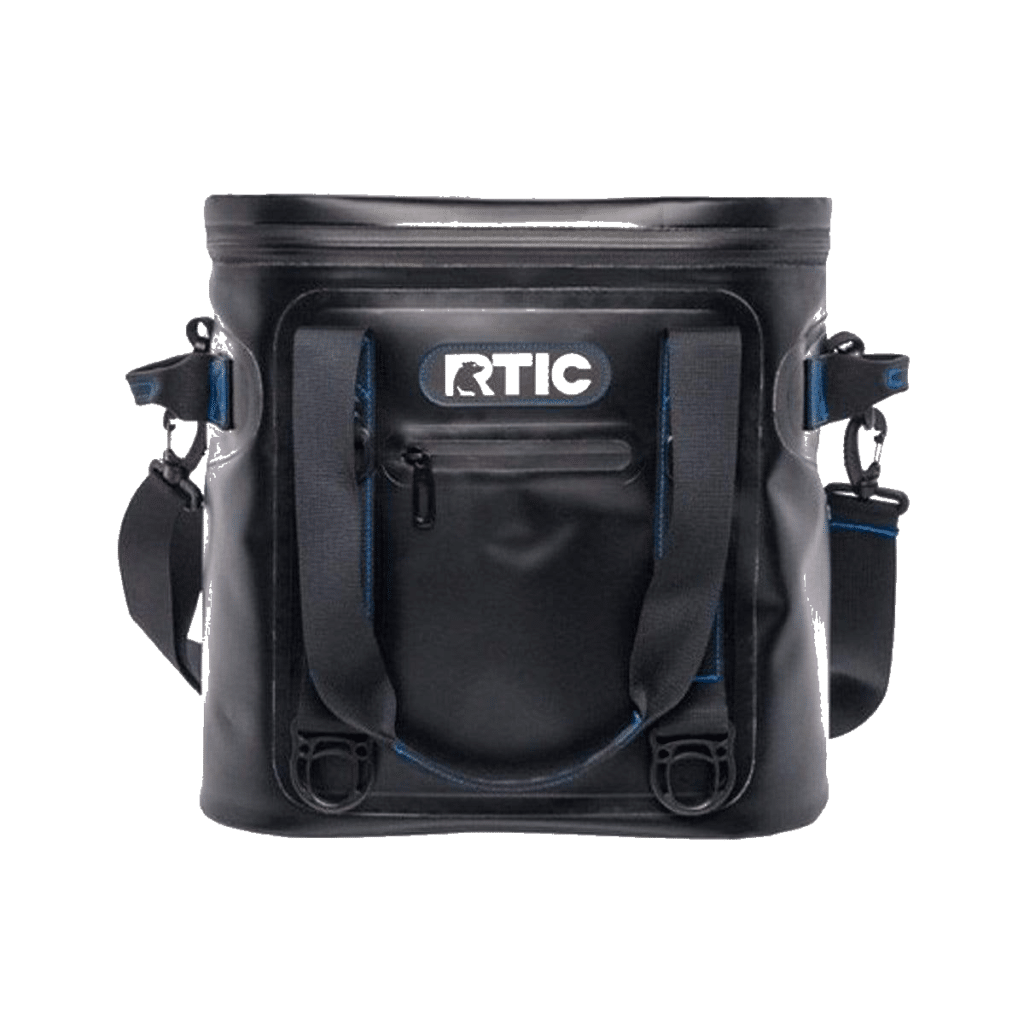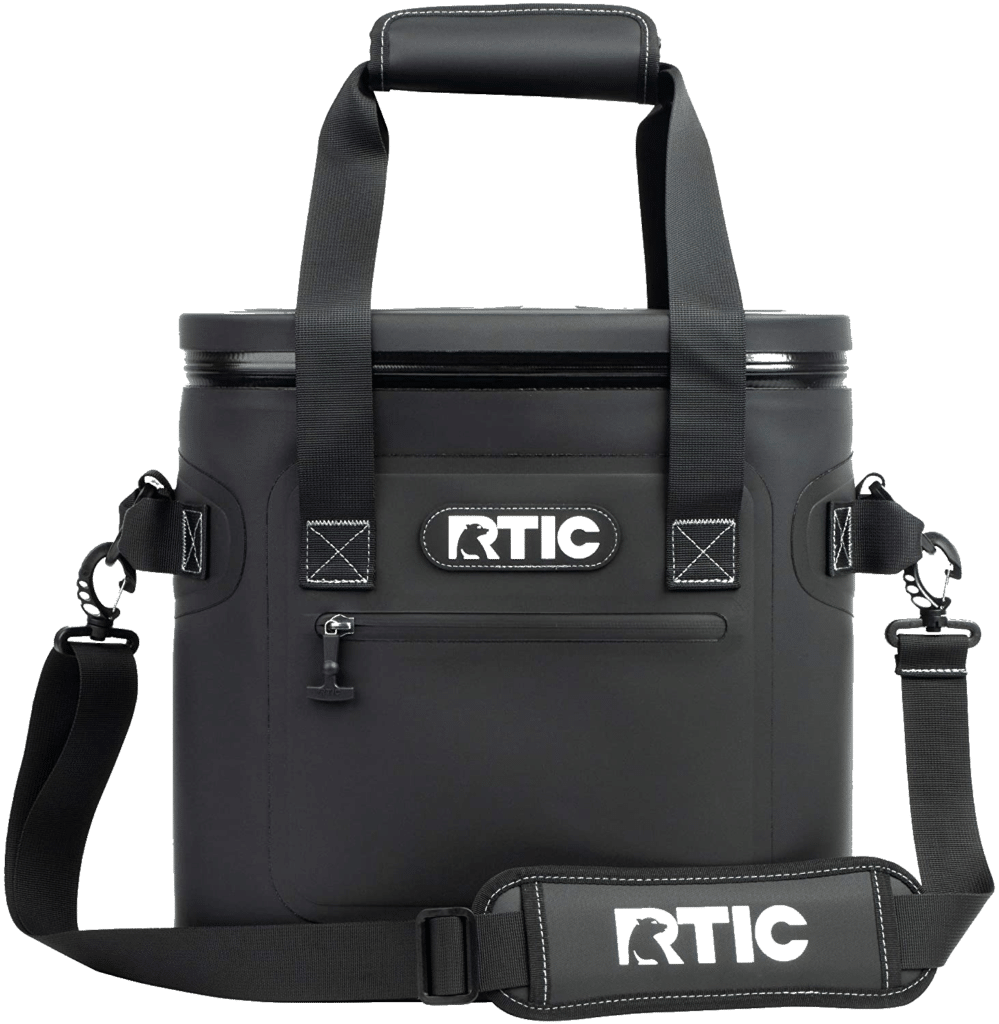Rtic vs Yeti: Which Brand Keeps Your Goods Cooled the Most?

With recent technology, many useful tools have been invented and utilized by society. What we now come to know as ice coolers were difficult to construct. With a lot of technology nowadays, it’s not surprising that leisure has been the point of focus for a while now.
With coolers, storing your beverages has never been easier—all the while keeping your beverages ice cold and ready to serve.
Rtic and Yeti have been two of the companies that took the lead in this new movement of convenient and portable coolers. Releasing a vast array of different types of coolers and similar apparatuses, Rtic and yeti have designed them with the ultimate cold insulation technology.
Founded not too long ago in the year 2006 by brothers Ryan and Roy Seiders, it was then that the cooler market was revolutionized. When the two brothers got tired of having their coolers break so often, it was then that they founded Yeti with the highest quality bared in mind.
This was because the brothers understood the market and that their target market was the outdoors type of people, all including hunters, anglers, and campers among various others.
At the time of its foundation, Yeti manufactured the high-quality and durable coolers that we know of today, boasting in the cooler market that their coolers had the longest possible cold retention. With their prices ranging around $200, their coolers were known to be significantly pricier than the usual $40-$50 cooler range in the market.
At first, consumers thought that it would be a huge waste of money purchasing such expensive equipment. However, consumers were quick to realize that the premium price of Yeti’s products brought them coolers that lasted for so long, making it a question of cold longevity and overall durability.
That was when Yeti completely exploded in the cooler market, and since then, Yeti has gained a loyal following of cooler fans across the region.
Yeti has now become one of the most successful brands in cooler products, with many users around the world enjoying the convenience and ease that comes from having a personal cooler and various others.
Founded fairly recently, RTIC was founded in the year 2015 in Texas, they have been widely known for selling a wide range of high-quality coolers and tumblers. But what makes RTIC a great brand is that they sell these coolers and tumblers for very cheap prices, especially when compared with other well-known brands such as Yeti.
When you consider it, both RTIC and Yeti are famous for their well-made products, but from which one should you buy? And what are the important differences between RTIC and Yeti? This in-depth guide should help with answering those questions, as well as covering all the major factors that both brands highlight, as well as the pros and cons.

YETI Tundra coolers are the stuff of legends. They’re built for whatever Mother Nature throws their way, which is surprisingly a long list of incredibly dangerous creatures and weather patterns. But no sweat — these outdoor coolers are more than up for the challenge. From the backcountry to the BBQ get-together, your YETI Tundra is ready for any and every outdoor adventure.
Table of Contents
How We Started
To start and provide a simple and accurate to follow comparison of RTIC and Yeti coolers and tumblers, we need to put each one to the test, finding out the range of different factors and learning about the many different features of each model.
When going for a good cooler or tumbler, many people often have different goals in mind, along with prioritizing the different factors. Some might look for better material and overall design to maximize its longevity, for example, coolers are used quite often, and that the wearer could take its toll. Other consumers prioritize the duration of how long these coolers could keep the cold insulated.
Regardless of what you’re aiming for in your next cooler or tumbler purchase, you should be able to find out about all the necessary information you need throughout this guide, covering everything from size capacity, and the quality of each cooler and tumbler in relevance to their standard prices, unique features, overall build design, and many more.
RTIC and Yeti certainly have their advantages and disadvantages, with some fairly major differences that separate one from the other. This guide is designed to assist anyone who is having trouble deciding between the two models, aiming to come out with a definitive conclusion.
Similarities and Differences
On the surface, if you only take a quick look at the product lines from both brands’ coolers and tumblers positioned side by side, you’ll for certain be having a hard time finding the major differences between them. They have minor changes in design, but they certainly look almost the same to the untrained eye.
Both RTIC and Yeti can carry about the same sizes of soft-sided coolers and hard-sided coolers. They also have very comparable features such as their draining systems, industrial handles, and much more. However, there are two major differences between RTIC and Yeti—their price range and quality.
So with having so many similarities, are there in actuality any definitive differences worth considering between RTIC and Yeti? Surely there are. This is because if we take a deeper look into the inner workings of both RTIC and Yeti, we will then be able to differentiate the key factors that give them their status.
RTIC’s products are a better option when compared to Yeti when it comes to pricing. But it’s believed that Yeti’s products are the better option when it comes to convenience and retaining ice-life.

A great personal cooler and holds up to 20 cans of your favorite beverage plus ice. It is 100% leakproof, puncture-resistant, and has an antimicrobial liner that resists mildew. This cooler is very practical for everyday use and can be taken to work, camping, hunting or fishing.
Manufacturing and Advertising
Starting with Yeti, they are known to offer a vast range of rugged and overbuilt products, and their prices can surely relate to this. If there’s an issue with the brand, it’s in its manufacturing, since there’s quite a bit of conjecture regarding how much of their products are sourced only in the US and not overseas.
On their website, Yeti claims that their Tundra coolers are manufactured in the USA, at facilities located in Iowa and Wisconsin, along with a facility located in the Philippines. Their Hopper coolers however are manufactured in China.
It’s still unclear however with where their materials are sourced from. If you also want to purchase any of their other products and accessories, you can find that Yeti has a large variety to choose from.
Yeti offers products ranging from seat cushions to ice packs, even some beverage-holder attachments, along with a variety of gear bags, and many more. They even offer a vast range of options for customization.
Despite all that, if you have done any research relating to high-end coolers, then it’s for certain that you’ve found out about the issue with Yeti and RTIC. RTIC is the brand that Yeti sued for imitating their products but regardless has many fans all across the US. If you’re wondering why then it’s simply because RTIC’s prices are considerably cheap in relevance to Yeti’s.
RTIC has made its name to be known with direct opposition to Yeti, they do it with their slogan that says “Over Built – Not Over Priced”. With RTIC selling their products at a whopping half the price that Yeti does (An extremely large difference when considering that both brands produce reasonably similar products.), it makes it somewhat easier to discern the key differences among the two brands.
For RTIC, all of their products are sourced and manufactured in China and based on many reviews found online, a lot of RTIC cooler owners consider the brand’s quality to be greatly comparable to Yeti.
The difference in pricing itself potentially makes RTIC the go-to brand if you’re buying on a budget. For anyone looking for a cheaper version (With reasonably good quality and standards), RTIC is the brand to go for.
Overall, when it comes to legitimacy and originality, Yeti is the better brand, especially when it comes to their commitment to only sourcing and manufacturing locally (Aside from the production site in the Philippines). They also ensure the luxury of better quality products and name-brand.
Continue reading and learn more about the key differences and unique features of the products of each brand.
Designs, Quality, and Comparisons
These portable coolers are made to stay cold by utilizing insulation and ice. The insulation that is commonly made from foam or plastic is placed within the walls of your cooler—this slows down air circulation, making it nearly impossible for warm air to get in. The ice is there to keep your cooler cold, and it’s the cooler’s job to retain that coolness. Continue reading to learn more about these brands’ build quality.
To start we’ll have to choose from the best common products that are offered by both brands. With RTIC, we’ll go with their RTIC 65 for their heavy-duty hard-sided coolers, the RTIC 20 for their much lighter rotomolded hard coolers, and the RTIC Soft Pack for their soft-sided coolers. With Drinkware, we’ll go with the RTIC 12 oz Lowball and the RTIC 30 oz tumbler for their tumbler selection.
With Yeti, we’ll start with their Yeti Tundra 65 for their heavy-duty hard-sided coolers, the Yeti Roadie 24 for their much lighter rotomolded hard coolers, and the Yeti Hopper M30 for their soft-sided coolers. With Drinkware, we’ll go with the Yeti 10 oz Lowball and the Yeti Rambler 30 for their tumbler selection.

Heavy-Duty Hard-Sided Coolers
RTIC 65
The RTIC 65 is starting it strong with its huge internal storage capacity of 75 lbs worth of ice. However, its ice retention may be slightly lower than the capabilities of the Yeti Tundra 65.
When the RTIC 65 is empty, it weighs in at exactly 36.5 lbs and has a larger size capacity than the Yeti Tundra 65. You can purchase this cooler at the measly price of $240, and has a short one-year warranty.

This cooler is all about extremes – from impact resistance and durability to long lasting ice retention. The RTIC can do double duty as a bench, nonslip step stool, tabletop and extra cutting board while keeping ice, perishables and vital supplies cold.
Yeti Tundra 65
Considered to be one of the most iconic coolers on the market, the Yeti Tundra 65 comes in at $350. Featured with a much longer ice retention than the RTIC 65, this cooler can hold about 52 lbs of ice. The Yeti Tundra 65 weighs in at 29 lbs when it’s empty, and has a warranty set for quite a lengthy 5 years, making it quite a reliable option.
It also comes with a free dry goods basket, unlike the RTIC 65. This particular cooler also has accessory add-ons such as sliding feet, a rod holster, a beverage-holder, ice packs, and seat cushions—making for a more customizable and personal experience.
Overall, when ice retention is being measured, the Yeti Tundra 65 is the obvious choice as it can last 7 days and remain ice cold. The only issue is that it’s significantly more expensive than most choices.
This makes the RTIC 65 the winner in this category, considering that its cold retention might be slightly less than the Yeti Tundra 65, it might not make much of a difference when considering that it still wonderfully serves its purpose while being sold at an amazingly cheap price.

When we set out to create a new standard for coolers, the Tundra was a the forefront of our mission. Born out of frustation with coolers that caved in when you stood on them, gave up on cold-holding when the wather got warm, or made it easy for bears to break into, we were determined to improve three main elements: durability, extended ice retention, and weather resstaince.
Rotomolded Hard Coolers
Yeti Roadie 24
Claimed to be the improved version of Yeti’s previous 20, the Yeti Roadie 24 is lighter, larger, and has better cold retention. It can be found in the market for $200, making it a great option when it comes to price and convenience.
It has the size capacity of 24 lbs worth of ice, and can even fit in a standard wine bottle. It weighs in at 12.8 lbs when it’s empty, and is designed with a fairly comfortable carry-on strap.
With this design, Yeti removed the usual drain plug since the cooler is pretty much light enough to be poured over with ease. You also have the leisure of purchasing a dry goods basket, a tie-down kit, and ice packs to implement into the cooler.

Our new model is the answer to all that and more. It’s 10% lighter in weight, holds 20% more, and even performs 30% better thermally. It’s got a taller build than its predecessor, so it now accommodates a standard bottle of wine upright, and is a better fit behind the driver’s or passenger’s seat of a car.
RTIC 20
The RTIC 20 is slightly bigger and about $70 cheaper than the Yeti’s Roadie 24, being sold at a great price of $130. Its shape is wider than the Roadie 24, but it’s slightly on the shorter side.
It has the size capacity of 25 lbs worth of ice, however, its shape doesn’t allow it to properly fit a standard wine bottle. The pack has a stainless steel handle, and overall weighs about 17.5 lbs when it’s empty. It also includes a drain plug designed into it, which makes for a convenient way to drain water.
Tests have been taken, and it seems that the Yeti Roadie 24 is the better cooler among the two. This is supported by the fact that either option is surely good, and that they serve their purpose well.
However, the cold retention of the Yeti Roadie 24 is unrivaled, especially with the bonus of being able to fit a whole wine bottle into the pack with ease. Although the RTIC 20’s cheap price is enticing, the Yeti Roadie 24 takes the cake here.

A great personal cooler and holds up to 20 cans of your favorite beverage plus ice. It is 100% leakproof, puncture-resistant, and has an antimicrobial liner that resists mildew. This cooler is very practical for everyday use and can be taken to work, camping, hunting or fishing.
Soft-Sided Coolers
Yeti Hopper M30
Compared to the various designs of many soft packs, Yeti designed this cooler in the shape of a tote bag instead of the standard boxy shape. There have also been tests that found out that the tote-shape made it a lot more comfortable to carry, as it rests easily on the side when you put it on with its shoulder strap.
This modern design is packed with a new magnetic mechanism, with two quick-release magnet buckles instead of the common zipper, which gives it a more powerful leak-resistant sealing.
Compared to the standard Yeti Hoppers and their zippers, the Hopper M30 is an exemption with its extremely strong HydroLok zipper.
The magnet locks also help eliminate any worries of the pack opening accidentally, since they automatically snap firmly shut when left alone. However, the magnets may somewhat make it difficult to open with one hand.
The cooler can be bought at a reasonable $300 and has a size capacity worth 28 lbs of ice. Also, it weighs a very lightweight of about 7 lbs when it’s empty.

YETI’s latest evolution of the Hopper soft cooler delivers on a top customer request – a wider, easier opening. Through thoughtful engineering and thorough design exploration, the new Hopper M30 replaces a zipper with magnets. This is their first cooler to put the HydroShield Technology to work for an ultra leak-resistant, yet easy-to-use closure.
RTIC Soft Pack 30
Sold at a much cheaper price compared to the Yeti Hopper M30, this cooler fundamentally has a similar function and is considered to be a cheap alternative for being sold for only $100.
It has the standard box shape, is quite a bit smaller, as well as being lighter. With ice retention’s quality slightly lower than the Yeti Hopper M30, depending on how you use it, it might not be a factor that could hugely impact your decision since it’s not much of a difference.
This soft pack can hold about 30 lbs of ice, and its aesthetics don’t necessarily say “modern”, but its functions remain to be reliable, considering its reasonably cheap price compared to the Yeti Hopper M30.
There’s also a huge difference in its closing mechanism—the RTIC Soft Pack 30’s zipper is waterproof, with a much smaller-toothed design, however that may make it take on significantly less abuse.
Once again, both coolers do particularly well when it comes to cold retention, but Yeti is the overall better option when it comes to that.
However, when you consider that RTIC’s Soft Pack 30 does almost just as well, but at a better price of $100. Since it also has the larger size capacity of the two coolers, the RTIC Soft Pack 30 is going to be our clear choice.

Our midsize cooler makes a perfect multipurpose cooler. It is 100% leakproof, puncture-resistant, and has an antimicrobial liner that resists mildew. It is tough as nails and keeps ice for up to 5 days. Holds up to 30 cans of your favorite beverage plus ice. Wrapped in a heavy duty vinyl shell, it is stronger than any other soft-sided cooler, tear resistant and UV protected to ensure it does not fade.
Drinkware and Tumblers
Yeti 10 oz Lowball and RTIC 12 oz Lowball
Yeti’s lowball drink container is made with 18/8 stainless steel with double-wall vacuum-based insulation, this piece of drinkware is made with a unique no-sweat feature. Because of the double-wall design, your drink’s temperature could last much longer, as it needs 30 minutes to experience temperature changes.
The RTIC 12 oz lowball has about the same design as Yeti’s 10 oz lowball. However the point here is given to RTIC—this is because of the extra 2 oz that the RTIIC 12 oz lowball can accommodate, along with the feature that it comes with a lid, something that the Yeti 10 oz lowball doesn’t have.
Yeti Rambler 30 vs RTIC 30 oz Tumbler
The tumblers are designed the same way with their specialized double-wall feature that has the no-sweat design. They also have similar components and features that can be found in other drinkware, but what makes these two good is that they can both last approximately 24 hours.
This should come out as a draw, however, when you consider their prices (The Yeti Rambler 30 costs about $35 and the RTIC 30 oz Tumbler costs 13 or so dollars), the RTIC 30 oz tumbler is significantly cheaper even when their qualities are just about the same—making it the clear winner in this category.
Who Should Get This?
RTIC
RTIC’S products are surely lacking in some features, especially when compared to Yeti’s latest cooler products, but it surely is a very solid and dependable cooler brand that still has a lot to offer.
Having a slightly weaker coldness retention factor is what slowed down the majority of RTIC’s products, however, their value for function is an amazing steal considering their significantly cheap prices.
When it was founded in 2015, it was widely known to be one of the most affordable cooler brands out in the market—that title is still maintained up to today.
It a good cooler to be recommended to those who don’t want to spend too much on some features that aren’t necessarily going to be needed daily.
Yeti
Yeti’s coolers have everything that makes a cooler good—they last especially longer and have an overall better cooler experience with it being a luxury to have.
This has been improved in a way that it doesn’t require any extra ice to make it last for an amazing 9 hours. The extra cold retention might not be required by all though, along with the extra features.
All in all, the Yeti experience is recommendable to those who are fans of cold retention and namesake (The brand name is world-renowned). For what it’s worth, you’ll have to pay extra for the privilege, and it’s also a great improvement compared to older coolers.
Our Pick
Overall, it’s clear to see that both the RTIC and Yeti have a lot to offer. The original Yeti serves as a great way to introduce high-end coolers to coolers who has the money, while RTIC has the same builds and functions. Which cooler brand gets our approval?
Our Pick: RTIC
The clear winner in this side by side comparison has to be RTIC. Even though the original Yeti offers a more luxurious experience and an overall better user experience along with the many added features and upgrades, it’s still significantly pricier compared to RTIC’s products who are considerably cheaper but still serve their purpose just as well.

Our midsize cooler makes a perfect multipurpose cooler. It is 100% leakproof, puncture-resistant, and has an antimicrobial liner that resists mildew. It is tough as nails and keeps ice for up to 5 days. Holds up to 30 cans of your favorite beverage plus ice. Wrapped in a heavy duty vinyl shell, it is stronger than any other soft-sided cooler, tear resistant and UV protected to ensure it does not fade.
